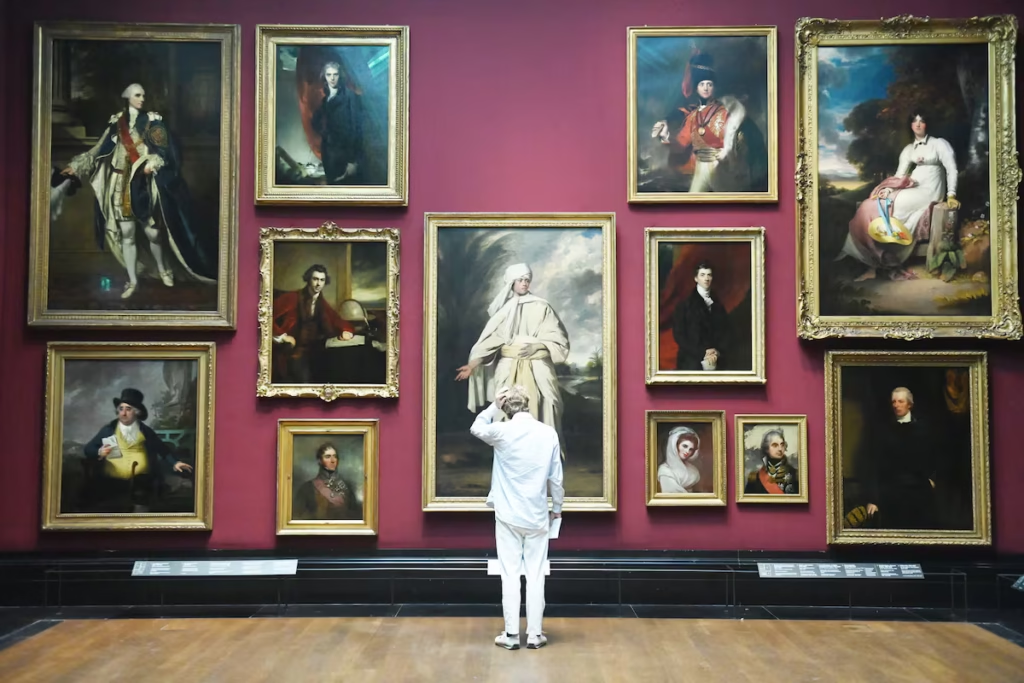The Smithsonian’s National Portrait Gallery has unveiled four new portraits, celebrating remarkable contributions to American society. The additions feature poet Joy Harjo, autism advocate Temple Grandin, filmmaker Steven Spielberg, and business leader Jamie Dimon.
Each portrait reflects a distinct area of achievement, from the arts and film to advocacy and business leadership. The gallery’s curators said the collection highlights diversity, innovation, and civic engagement across the United States.
Joy Harjo, the first Native American poet laureate of the U.S., is recognized for her work in poetry and cultural advocacy. Her portrait symbolizes artistic excellence and the importance of preserving indigenous voices in American culture.
Temple Grandin, a leading autism advocate and animal science expert, is honored for her groundbreaking work in raising awareness about neurodiversity and improving livestock handling. Her portrait celebrates both innovation and compassion.
Filmmaker Steven Spielberg, known for creating some of the most iconic films in cinematic history, represents storytelling and cultural influence. His portrait acknowledges contributions to the arts that have shaped generations of audiences.
Jamie Dimon, the longtime business leader and CEO, is included for his impact on the corporate world and civic engagement. His portrait reflects leadership in the private sector and a commitment to social responsibility.
Curators note that the new portraits collectively reflect the breadth of American achievement. The gallery’s goal is to highlight individuals who have made meaningful contributions to society while inspiring future generations.
The unveiling ceremony included gallery staff, artists, and members of the public. Attendees praised the selection of figures as a demonstration of the nation’s diverse accomplishments and the power of leadership in multiple fields.
Observers emphasize that these portraits serve more than a decorative purpose. They act as a historical record, documenting cultural, social, and economic contributions that shape America’s identity.
The National Portrait Gallery continues its mission to showcase influential Americans. By including figures from different backgrounds and professions, the gallery underscores the value of diverse perspectives in shaping public life.
The inclusion of Grandin and Harjo also highlights the gallery’s commitment to representation. Recognizing voices historically underrepresented in national collections helps create a more inclusive cultural narrative.
Spielberg’s and Dimon’s portraits complement this diversity by highlighting excellence in widely recognized fields, bridging the gap between popular culture, media, and business leadership.
Visitors to the gallery can view these new portraits alongside existing works that chronicle the nation’s history and cultural evolution. Each portrait provides insight into the life, achievements, and impact of its subject.
Art historians note that the gallery’s ongoing additions help contextualize contemporary achievement within a broader historical framework. The portraits reflect both personal accomplishment and societal influence.
Overall, the unveiling of these four portraits reinforces the National Portrait Gallery’s role as a space for celebrating achievement, cultural impact, and civic leadership. The gallery continues to inspire visitors through visual storytelling and representation.
These new portraits underscore the importance of honoring diverse accomplishments. They demonstrate how individual contributions across arts, advocacy, film, and business shape the cultural and civic landscape of the United States.


